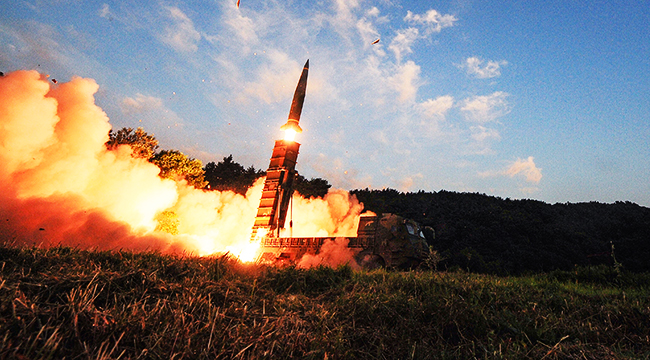
Last week, North Korea test-fired a missile, its first in over two months, that was reportedly capable of reaching Washington, D.C. Secretary of Defense James Mattis told reporters that the projectile “went higher, frankly, than any previous shot they’ve taken.” Indeed, the regime’s new Hwasong-15 weapon rose 2,800 miles above the Earth’s surface, and during its journey, the ballistic missile had a relatively (in CNN’s words) “close call” with a passenger plane before splashing into the Sea of Japan.
The Washington Post reveals that crew members of a Cathay Pacific flight, en route from San Francisco to Hong Kong, reported seeing the missile “blow up and fall apart near our current location” while it reentered the atmosphere. This is a disconcerting development, but airline and government officials are still reviewing the matter and are staying calm for now:
Cathay said in a statement that it had been in contact with relevant authorities, industry bodies and other airlines about what was seen from Cathay Pacific flight 893, and at the moment there were no plans to change flight routes.
“Though the flight was far from the event location, the crew advised Japan ATC (Air Traffic Control) according to procedures. Operation remained normal and was not affected,” the statement said.”We remain alert and review the situation as it evolves.”
There was no immediate danger to this particular flight — nor did anyone manage to snag a photo — but it’s not great news that the missile was close enough for a sighting. Of course, CNN aviation safety analyst David Soucie noted that odds of a missile-plane collision are “billions to one,” and an anonymous pilot added that if a missile was truly close enough to hit a passenger plane, “You wouldn’t even know it was coming.” In other words, actually viewing the missile is something of a positive sign? Right.
Meanwhile, Pyongyang is still pleased about sending a missile higher than they’ve ever done before (although it crumbled upon reentry) and remains focused on developing a nuclear-tipped long range missile by early 2018.
(Via CNN & Washington Post)
